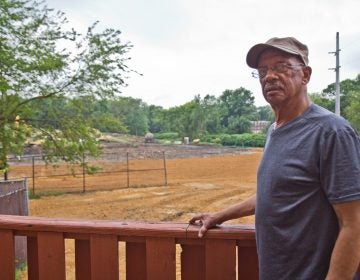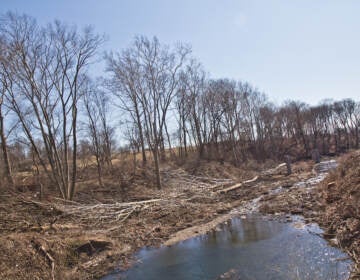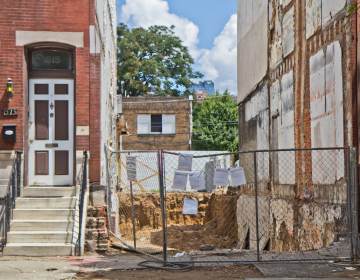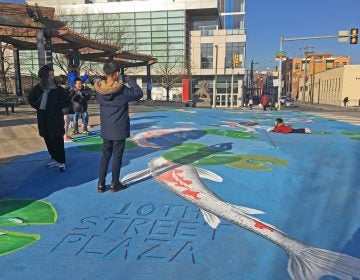Decades of racist transportation policy killed Avante Reynolds — Cobbs Creek wants change
Cobbs Creek Parkway is one of the city’s most dangerous roadways. How many lives will be lost before the state improves safety conditions?
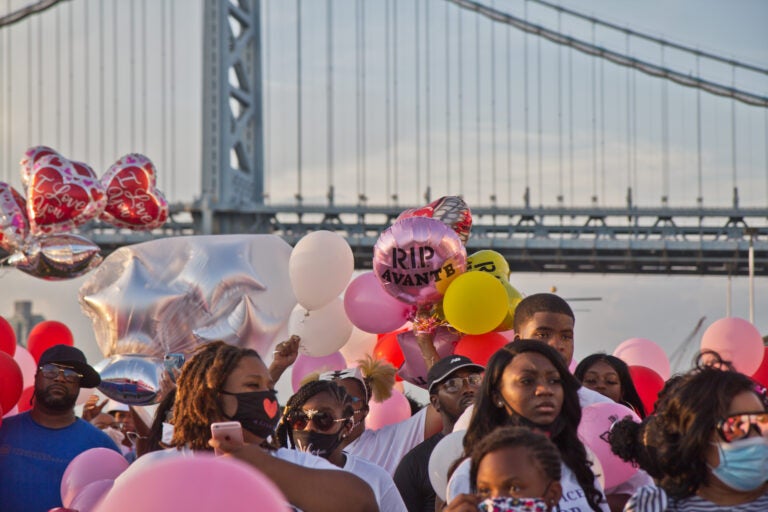
Friends and family of Avante Reynolds, a 25 year-old woman who was killed crossing the Cobbs Creek Parkway in Philadelphia, gathered on the Camden Waterfront to remember her. (Kimberly Paynter/WHYY)
After his 25-year-old daughter was struck and killed in a hit and run last weekend, Cobbs Creek resident Cravante Reynolds wanted to fill the sky with her favorite colors. He organized a vigil at the Camden Waterfront, invited all her friends and packed an entire rental truck full of red, pink and white balloons.
Hundreds of family, friends and neighbors turned out to the Thursday evening vigil to celebrate Avante Reynolds. Before they released a truckload of balloons under the Ben Franklin Bridge, guests sang and exchanged tearful hugs — remembering the creative young mother who left behind a 2-month-old baby and memories of a “big personality.”
“When you seen Avante, you seen Avante,” recalled her uncle, Ernest Bowen. “You knew that was Avante. Orange hair, pink hair, her shows on YouTube. Everybody’s seen that.”
Recalling his niece, Bowen said Reynolds was always dressed to the nines in original outfits, always the first to jump into a dance contest. She was authentic and charismatic, his “little star.” Her vigil brought out loved ones who wrote original songs as tribute to remember her vibrant personality.
Overcome with shock and grief, Bowen said he had visited the site of his niece’s death almost every day.
“I’m there every day, at 10 ‘o’ clock, 2 ‘o’ clock in the morning,” he said. “We want justice. We gotta slow down. All of us gotta slow down.”
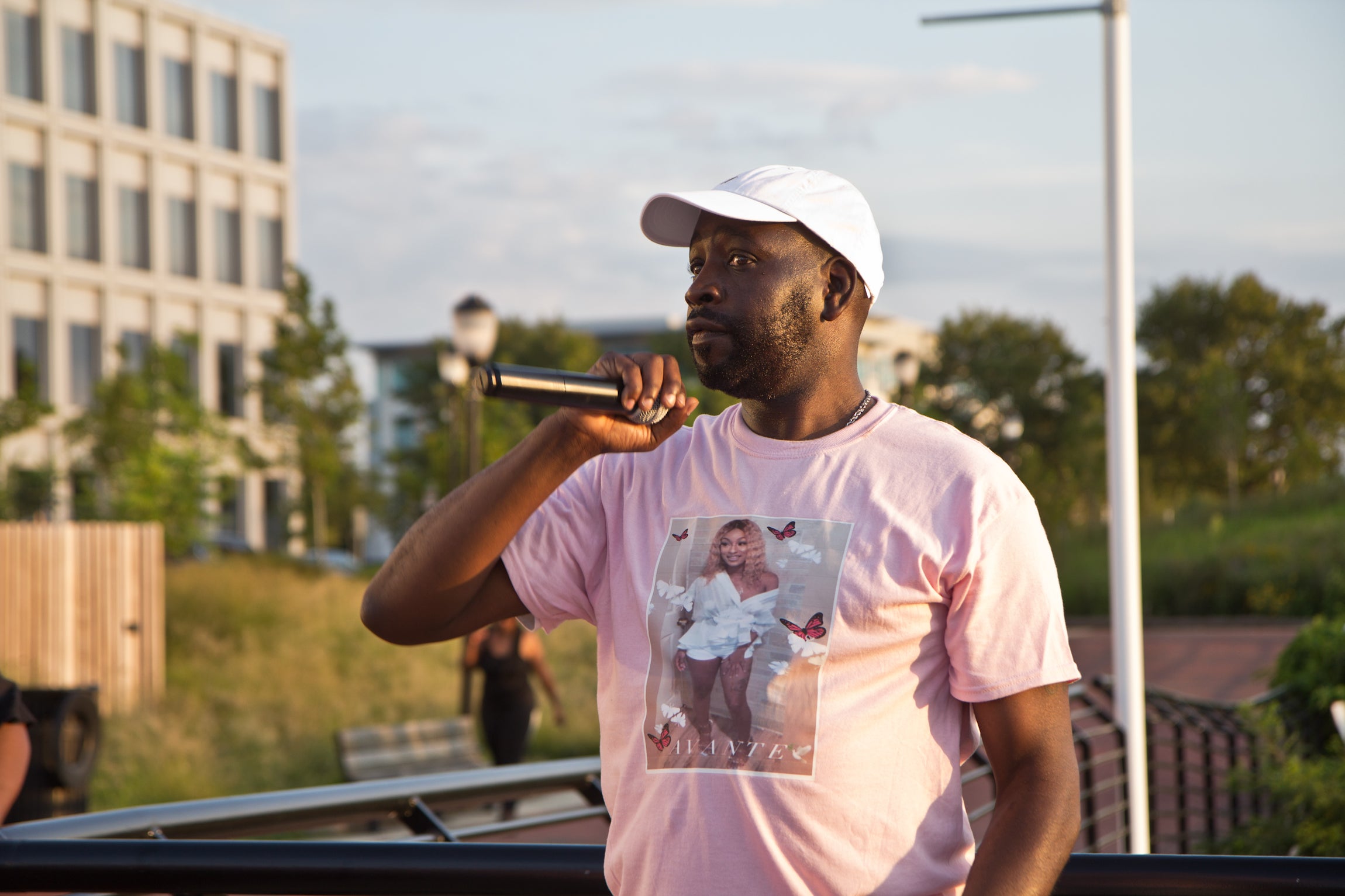
Reynolds was killed on Aug. 21 while trying to cross Cobbs Creek Parkway — a four-lane highway that runs alongside a public park through residential neighborhoods home to thousands of families, most of them Black. The 12-mile state road that connects Delaware County to Market Street via West Philly is one of the city’s deadliest thoroughfares. Less than a month before Reynolds died, another accident on the parkway killed two people and injured three more.
“We call it Nascar,” said Lisa Love, block captain of the 600 block of Cobbs Creek Parkway. “People have been hit and killed before. We’ve seen all kinds of things.”
Between 2012 and 2016, the parkway saw 155 crashes, according to a Delaware Valley Regional Planning Commission report. The roadway is listed on Vision Zero’s High Injury Network, a database of 12% of Philly’s streets where more than 50% of traffic fatalities have occurred.
Love and other neighbors neighbors in the area — much of which was subject to 20th century redlining policies that reinforced racial segregation and reduced property values — said they’ve lobbied the city and the state for decades to make the roadway safer. In return, they’ve gotten only tiny improvements that they say haven’t made much of a difference. It’s an example of a troubling nationwide phenomenon: Communities of color don’t get access to traffic safety measures with the same ease as predominantly white neighborhoods.
“Black folks are dying in neighborhoods based on getting hit by cars when it seems like the community has been asking for traffic calming measures for a while,” said Tamika Butler, a civil rights attorney and former executive director of the Los Angeles Bicycle Coalition who now consults on equitable transportation issues. “That’s another form of racism in this country.”
Philadelphia traffic fatality statistics back Butler. The Bicycle Coalition of Greater Philadelphia found that almost half of the streets listed in the Vision Zero High Injury Network — comprising the most dangerous roads in the city — are in communities of color, many of which also struggle with higher rates of poverty and lower property values that trace back to the redlining practices that diverted investment in the 20th century.
A dangerous road ignored
Marthenia Perrin is the block captain for the 6200 block of Catharine Street — which intersects the parkway where Reynolds was killed almost two weeks ago.
“It’s a busy, busy road,” said Perrin, who’s lived in the neighborhood for more than 50 years. “It’s difficult getting across the street. I have to be sure that I can part the Red Sea, part the Cobbs Creek, to get across, it’s been very difficult.”
Along the parkway, there’s a public park complete with basketball courts, tennis courts and a playground. There are two rec centers, plus a bike trail dotted with picnic tables and benches.
Between 13,000 and 23,000 cars drive the parkway each day, per PennDOT spokesperson Robyn Briggs. The posted speed limit is 35 miles per hour, but cars honk and pass their peers on the left — even on the stretch of the road that’s just one lane going each direction.
Around the bend at 60th Street, cars have been known to smash into guard rails, street lights and bollards, endangering pedestrians on the trail. At night, residents say drag races — loud and aggressive — overtake the highway.
The Bicycle Coalition of Greater Philadelphia last week identified six segments of the parkway where there are more than 1,000 feet between traffic controls, like crosswalks, stop signs or stop lights. Another section, from Whitby to 70th, clocks 6,600 feet — 1.25 miles — without a crosswalk.
Tracey Gordon, now Philadelphia’s Register of Wills, says the parkway has terrorized residents for decades. Alongside her neighbors, like Perrin, she’s long advocated for change to come to the roadway, which she calls the Roosevelt Boulevard of West Philadelphia.
“It’s really, really dangerous,” Gordon said. “In order for us to utilize the picnic areas, the basketball courts, the swimming pools, our families have to cross that street. Right now, it’s really like the Wild West.”
“We have to flip who we define as the experts”
Gordon and Larissa Mogano, cofounder of the Cobbs Creek Neighbors RCO, first complained to a slate of elected officials — from district councilmembers to state reps to folks at the Streets Department and PennDOT — about destroyed guard rails roughly 10 years ago.
They brought some of their elected officials on a walking tour of the parkway, begging for comprehensive change to the highway. Mogano said it took years for the state to replace the guard rails — and they haven’t yet gotten to any of their other requests.
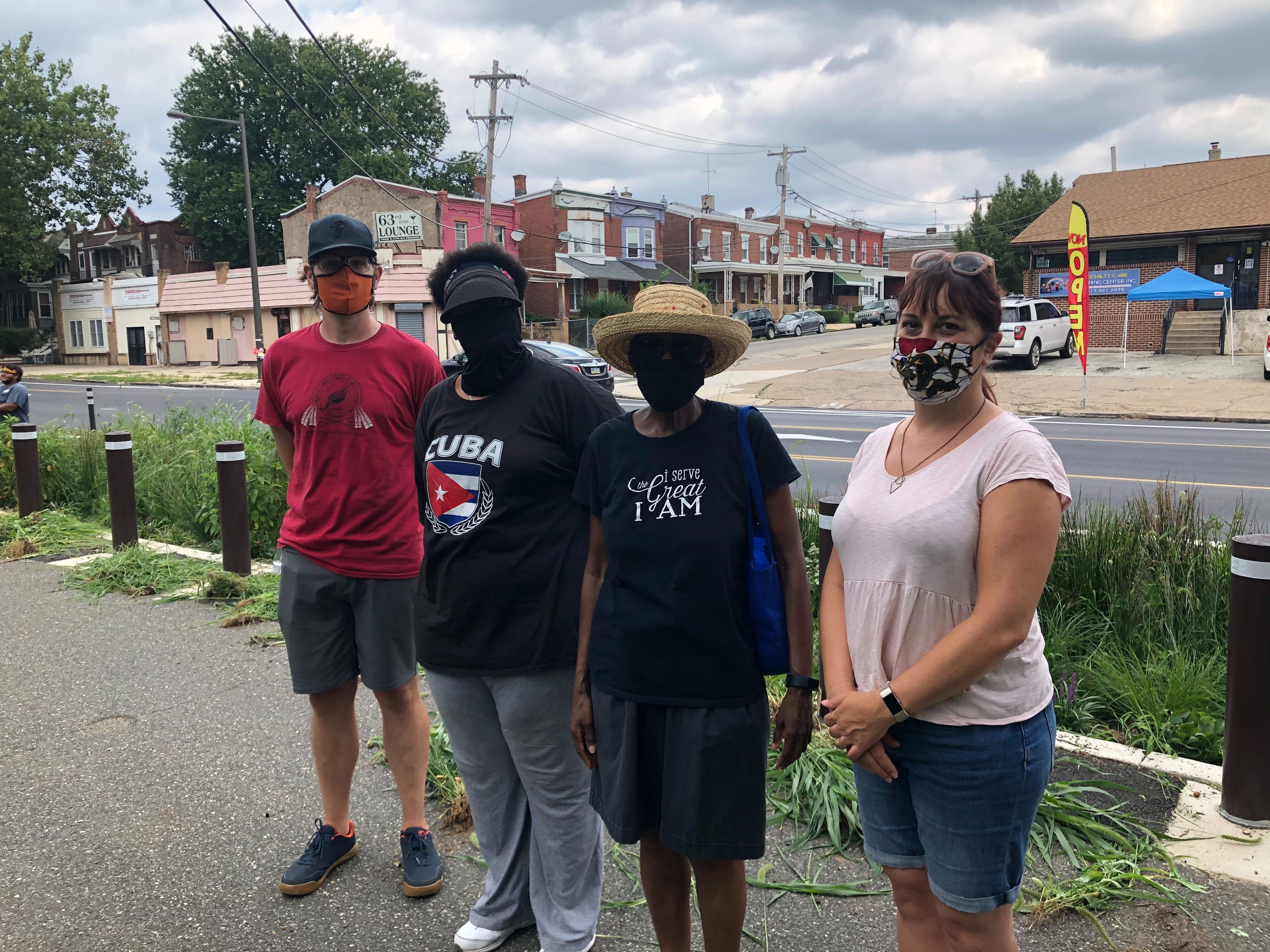

Subscribe to PlanPhilly
It’s not unusual, Butler said, for city and state agencies to ignore the transit needs of communities of color. The Los Angeles-based transit consultant has seen it time and time again in their work.
“People aren’t necessarily thinking about traffic and transportation when they think about the toll that being Black in America takes on folks,” Butler said. “One of the things we hear over and over again in communities of color is, ‘There’s a park right across the street, but we get in our cars and drive to a different park because I don’t want to get hurt, and I can’t cross that street.’”
It’s an old problem. Many 20th-century highway projects destroyed and displaced Black neighborhoods from Washington D.C. to New Orleans. The roadways spatially reinforced the redlining policies that had already reduced property values and made segregation unequal to non-white property owners.
In the last decade, various agencies have taken an interest in Cobbs Creek Parkway with an eye to remedying racist mistakes of the past. The Philadelphia2035 project — which asked residents what improvements they wanted for their neighborhoods in 2017 — recommended traffic calming devices for the Parkway.
Then, a 2019 DVRPC study identified the highway as suffering from “decades of deferred maintenance and neglect,” and in need of traffic calming measures to make the road safer for pedestrians.
Meanwhile, neighbors say they consistently asked city and state officials to tend to the dangerous thoroughfare. So what came of all the advocacy and published studies?
A Streets Department spokesperson said the city has been in contact with PennDOT about making larger safety improvements to the roadway — but ultimately that project would fall on PennDOT, since it’s a state road.
So far, Briggs said PennDOT has checked a few boxes:
- Fixed the mangled guard rails
- Installed surface treatment to the parkway’s curves to reduce wet pavement crashes
- Reduced lane width from 12 to 11 feet
- Repaved the street
- Re-striped the paint and added “PED XING” pavement legends to two trolley stops
Later this year, the department intends to implement some more changes — like replacing the 8-inch traffic lights with 12-inch ones, adding more curve/turn signs and installing rumble trips to the center lane to discourage passing on the left. They might even put in a roundabout at Spruce Street.
Although potentially helpful, those changes aren’t the sort of big-picture renovations that neighbors have requested for almost 20 years.
They want more street lights, stop lights and stop signs. They want more crosswalks along the thousand-foot stretches where none exist. They want rumble strips and speed bumps to slow cars down in their lanes, not just in the center of the street. They want more security cameras to catch hit-and-run offenders — like the driver who struck Reynolds.
“We’ve been asking for the past 10 years,” Love said. “I guess this is going to make a difference. We don’t know. But at least put the overhead traffic lights going both ways. It’s a safety issue for our neighborhood.”
What strategy would Butler recommend to PennDOT? Ask neighbors what they actually want.
“The person who’s hanging out on their stoop every single day, hanging out on the corner talking to their friends, sitting at the park watching their kids, those are the actual experts,” Butler said. “If those folks are saying, ‘We need a stop sign, we need to do something about the speed limit, we need a crosswalk here with flashing lights,’ those are the folks I would listen to. We have to flip who we define as the experts and listen to folks experiencing the trauma every single day.”
WHYY is your source for fact-based, in-depth journalism and information. As a nonprofit organization, we rely on financial support from readers like you. Please give today.




